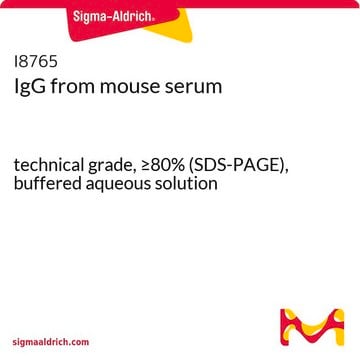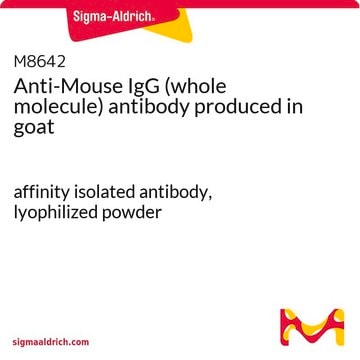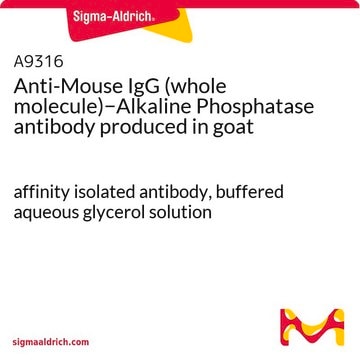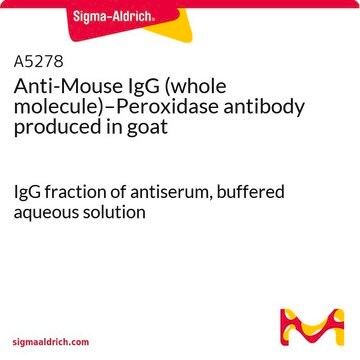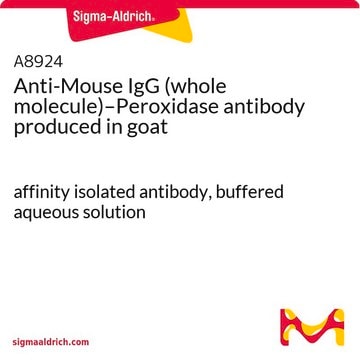Wichtige Dokumente
M5899
Anti-Maus-IgG (Gesamtmolekül)
whole antiserum
Größe auswählen
About This Item
Empfohlene Produkte
Biologische Quelle
goat
Konjugat
unconjugated
Antikörperform
whole antiserum
Antikörper-Produkttyp
secondary antibodies
Klon
polyclonal
Enthält
15 mM sodium azide
Methode(n)
indirect ELISA: 1:70,000
quantitative precipitin assay: 3.2-4.8 mg/mL
Versandbedingung
dry ice
Lagertemp.
−20°C
Posttranslationale Modifikation Target
unmodified
Suchen Sie nach ähnlichen Produkten? Aufrufen Leitfaden zum Produktvergleich
Verwandte Kategorien
Allgemeine Beschreibung
Spezifität
Anwendung
- immunoblotting
- immunohistochemistry
- proteomic microarrays
- the preparation of immunochromatography strips for magneto-enzyme lateral flow immunoassay[1]
- immunochromatography[1]
- MYCN DNA-binding analysis (ChIP-seq)[2]
Chromatin immunoprecipitation (1 paper)
Biochem./physiol. Wirkung
Qualität
Physikalische Form
Lagerung und Haltbarkeit
Haftungsausschluss
Sie haben nicht das passende Produkt gefunden?
Probieren Sie unser Produkt-Auswahlhilfe. aus.
Lagerklassenschlüssel
10 - Combustible liquids
WGK
nwg
Flammpunkt (°F)
Not applicable
Flammpunkt (°C)
Not applicable
Hier finden Sie alle aktuellen Versionen:
Analysenzertifikate (COA)
Die passende Version wird nicht angezeigt?
Wenn Sie eine bestimmte Version benötigen, können Sie anhand der Lot- oder Chargennummer nach einem spezifischen Zertifikat suchen.
Besitzen Sie dieses Produkt bereits?
In der Dokumentenbibliothek finden Sie die Dokumentation zu den Produkten, die Sie kürzlich erworben haben.
Kunden haben sich ebenfalls angesehen
Active Filters
Unser Team von Wissenschaftlern verfügt über Erfahrung in allen Forschungsbereichen einschließlich Life Science, Materialwissenschaften, chemischer Synthese, Chromatographie, Analytik und vielen mehr..
Setzen Sie sich mit dem technischen Dienst in Verbindung.

